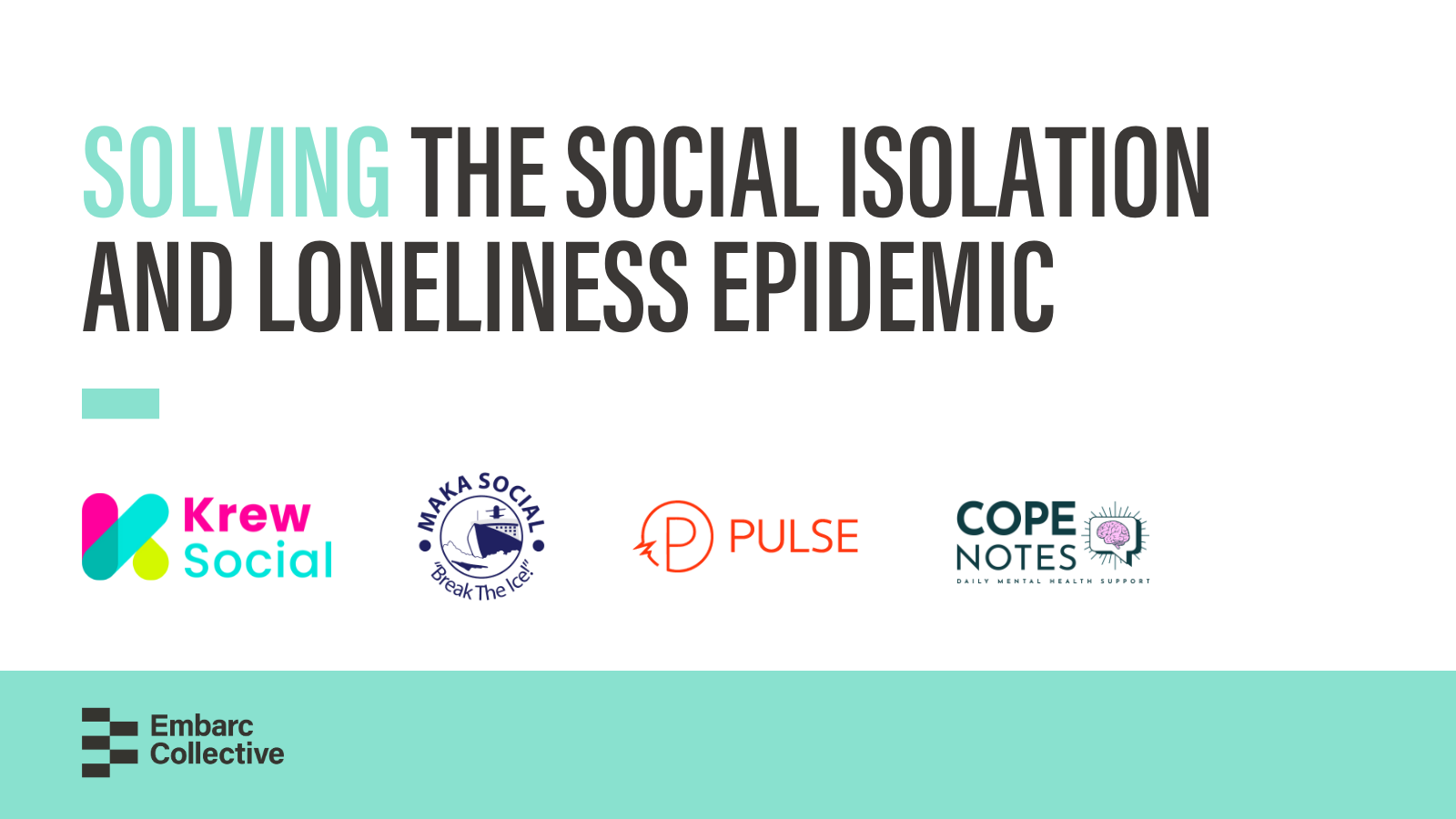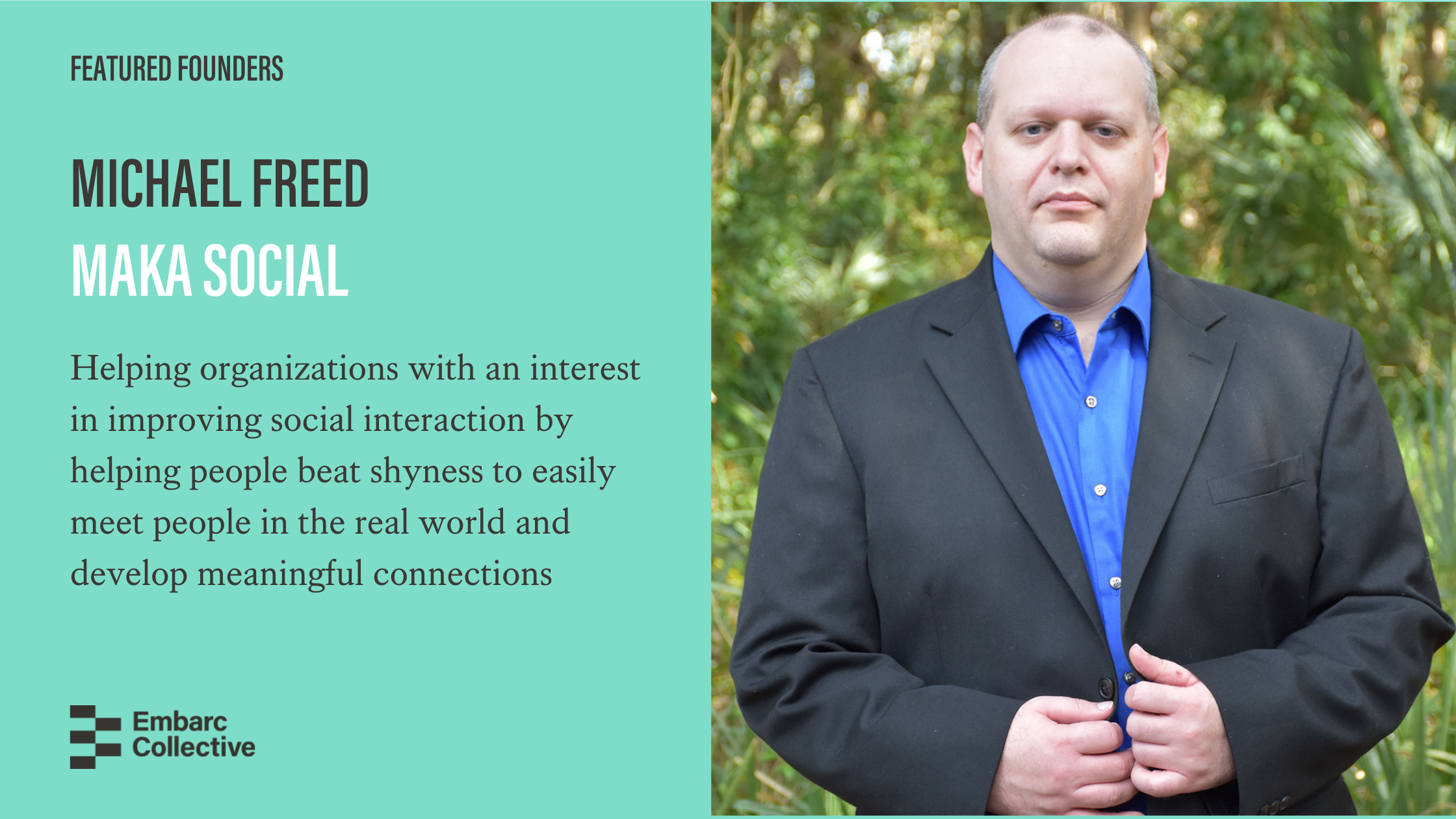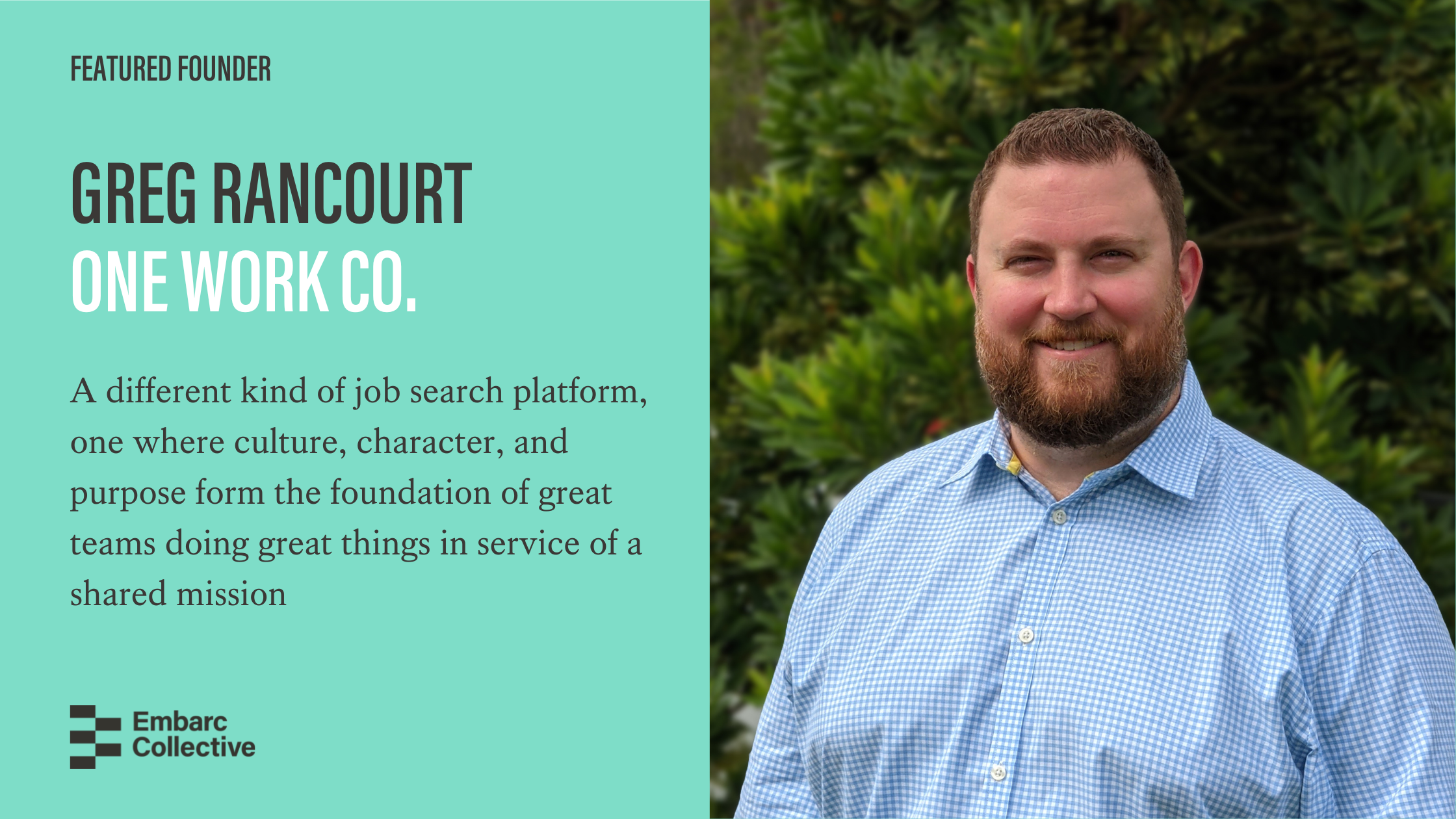What were you doing previously and what inspired you to launch your company?
I have been an aerospace engineer for most of my career, working on UAV propulsion, satellite ground control systems, flight management systems, and joint sensor networking. I like to say that aerospace engineering is the action movie of engineering: the products are loud, fast, or explosive! I loved working in that industry because you get to build systems that have a positive impact on people’s lives. They will fly on an aircraft or use a GPS signal that I helped deliver.
On face value, it doesn’t seem like building a job search platform would be a natural extension of those experiences, but engineering embodies a spirit of continuous improvement that we share at One Work.
That spirit inspired a thought experiment: How would you realize humanity’s potential?
We came to the conclusion that if we could align people around shared purpose and equip them with the resources required to effect positive change, we could create powerful downstream effects for individuals, families, and communities. The hiring process is a pivotal moment when people decide what to do with their lives, so that’s where we opted to innovate first.
What pain point is your company solving? What gets you excited to go to work every day?
I’ve been fortunate to work with incredible people who show up because they believe in the mission and the people they work with. When those critical elements align, teams become unstoppable. They transcend the limits of their abilities.
We can all remember working on a team that seemed to have something special. Our team members were a blast to work with, and the work was fulfilling. We stayed late because we wanted to, not because we had to. We came home energized and eager for what tomorrow would bring.
What makes those teams special has everything to do with fit: all of the pieces are perfectly placed. But it’s downright impossible to assess fit early on in the hiring process.
Today’s tools rely on keywords to screen for the perfect job opening or candidate, leaving the complex, intangible, and personal assessment of fit to the interview process. Job search platforms simply don’t take into account the information required to create high-performance, highly engaged teams, nor are they incentivized to do so – they make more money when hires go wrong and employers are forced to return for another dip in the talent pool.
Have I mentioned how big and how noisy that pool is? Searching for the right fit is time-consuming when there’s so much data to digest, and employers and job seekers alike are competing with hundreds, if not thousands, if not millions, of other people using the same keywords.
Ultimately, we’re addressing these issues by creating a high-quality, low-volume talent pool with culture, character, and purpose as keystones. We’ve designed our systems based on research in psychology, choice architecture, and employee engagement – it’s a radically different approach to the hiring process, and we can’t wait for you to see it.
I am excited to be a part of One Work because I get to help people with an issue that is central to their lives. When I talk with users about what we’re building and their eyes light up – it makes you want to do everything in your power to enable their success. Service is an endless wellspring of motivation.
Name the biggest challenge you faced in the process of launching the company. How did you overcome it?
Confidence was a significant challenge for me. I had a case of impostor syndrome, and I still do sometimes – if you’re grounded and introspective, you realize just how little you know in the grand scheme of things.
Running a company requires a multidisciplinary mindset, but I had only ever worked in engineering. I had an idea but none of the skills to put it into practice, whether it was finance, marketing, design, web development, or even hiring! Nor did I have any connections with people who had walked this road before and could point me in the right direction.
So I started learning. I watched tutorials on YouTube to learn new tools. I read blogs. I took a year of web development courses through Codecademy. I studied small business concepts with Google Primer. I built and reworked prototypes, iterating from big picture to implementation details and back again. Crucially, I found ways to implement new skills at my job so I could solicit feedback on how I was doing.
Once I’d made enough progress, starting a company became an opportunity, not a risk. I was passionate about the mission, and I felt I could learn just about anything if I put my mind to it. It started with a growth mindset.
Where do you see your company headed next?
We are heads down on product development with the goal of launching our initial job seeker features in a few months. Those features are designed to provide value to job seekers even before employers have the ability to post jobs, helping us overcome the challenges of bringing two sides of a marketplace together. Once the job seeker community is established, we will launch the employer side of the marketplace.
We want to place people in their forever jobs, which means supporting them in ways that go beyond hiring. Future features will support our users from the time they identify a career path to the time they retire, with a focus on helping them refine their career goals and connecting them to the resources required to reach them.
Our vision is to create a global community of mission-driven individuals capable of addressing humanity’s most significant challenges and realizing its most ambitious dreams. One Work is about leaving the world better than we found it, and a new way to hire is just the beginning. We are excited for the road ahead!
Give us a tactical piece of advice that you’d share with another founder just starting out.
Small companies are expected to move quickly. Enter the MVP: minimum viable product.
If an MVP represents what needs to be done, then I’d encourage you to consider why it needs to be done and how it is developed.
We have two primary levers to improve schedule: reduce scope or increase velocity. MVP falls squarely in the first camp, reducing scope to the minimum set of features required to go to market. To truly scrutinize the MVP, you need to understand why those features are required, and they should be derived from your OKRs: objectives and key results. If a feature doesn’t support an OKR, send it to the farm upstate!
To increase velocity, you need to understand how your product is developed. That means understanding the steps in your development process, which are repeatable, and the steps in your development roadmap, which are not. The former can be improved with Theory of Constraints and the latter with Critical Chain.
Theory of Constraints asserts that your repeatable development process has a single constraint that limits your ability to deliver features faster. Maybe user research is the constraint because of the waiting time between interviews, which means you can only deliver features as quickly as you can interview users to define them. You will develop features more quickly if you eliminate the constraint, at which point the constraint moves and the process of identifying and eliminating the constraint repeats. Hooray, continuous improvement!
Critical Chain states that your roadmap has a critical path that represents the longest series of dependent tasks, and you can only go to market as quickly as you can complete the tasks on the critical path. If I’m developing an email application, for example, I can’t organize emails if I haven’t developed the feature to receive emails yet. Know your feature dependencies and focus on the critical path. Tasks that aren’t on the critical path can be worked in parallel by multiple team members.
If you prioritize the critical path and continue investing in your development process, you will increase velocity with your current team. If that’s not fast enough, consider hiring – we’d be happy to help!
Why Tampa Bay?



